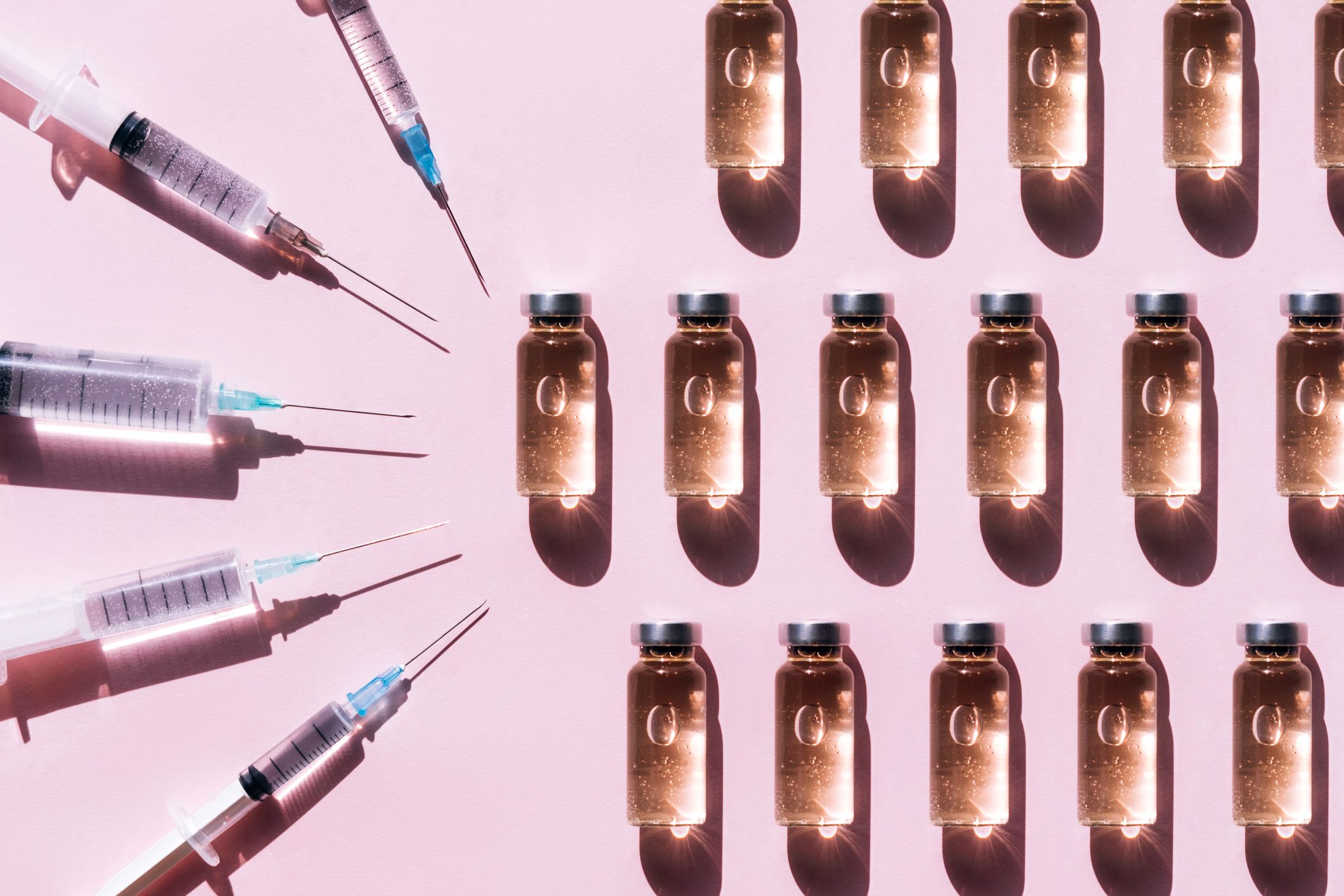Botox for Sweating: Everything You Need to Know

When temperatures rise, most of us sweat more, as it’s the body’s way of seeking relief from the heat and cooling down. But sometimes, sweating can become excessive, a condition that can range from “mild dampness to severe dripping and can result in substantial impairment in quality of life,” according to a 2016 study published by the National Institutes of Health. People who experience excessive sweating, according to cosmetic dermatologist Michele Green, most likely “suffer from a condition called hyperhidrosis. In these patients, the nerves which signal the sweat glands to function are hyperactive and cause an excessive amount of sweat.” Hyperhidrosis is classified as a skin condition resulting from overactivity of sympathetic nerves.
The aforementioned study estimates that over 15 million people in the U.S. experience excessive sweating and notes that there are probably even more people who suffer from the condition but do not report it. Current findings indicate that people with excessive sweating might not know the condition is indeed a medical concern nor that there are treatment options available. One such treatment is the injection of Botox, which garners temporary relief from excessive sweating. “By injecting Botox directly into the areas which cause sweating, such as your underarm or palms,” explains Green, “these overactive nerves are paralyzed and cannot signal the nerves in your sweat glands to fire, and hence block the release of sweat in the injected areas.”
Ahead, a cosmetic dermatologist and aesthetic nurse explain how Botox is used to treat excessive sweating, and everything you need to know about the treatment procedure.
Meet the Expert
- Montana Dillenberg, RN, is an aesthetic nurse practitioner at SkinSpirit at Lasky in Beverly Hills, CA.
- Michele Green, MD, is a board-certified cosmetic dermatologist who treats hyperhidrosis at her New York-based dermatology practice.
What Is Botox for Sweating?
“Patients who suffer from excessive sweating suffer from a condition called hyperhidrosis,” explains Green. Because Botox is a neurotoxin, its “mechanism of action,” according to Green, is that it “blocks the nerves which are responsible to activating sweat glands.” Botox contains a protein called onabotulinumtoxinA, which effectively prevents the sweat glands from excreting sweat.
People who are best suited for this procedure are, according to Green, “healthy individuals who have used prescription antiperspirants without success and are looking for a better way to have long-term relief from sweating.” According to Dillenberg, contraindications for the procedure include but are not limited to “pregnant and breastfeeding people, people with allergies to neurotoxins, hemorrhagic conditions, autoimmune disease, and neuromuscular disorders.”
Benefits of Botox for Sweating
Studies indicate that Botox is highly effective for reducing excessive sweating, and as such, the treatment is usually at least partially covered by insurance. You may have to undergo previous treatments (like the use of prescription-strength antiperspirants) in order for your insurance to deem the treatment a necessary medical option.
When injected into a patient’s underarm, Botox can offer relief from sweating for up to five months. “Botox also helps considerably in treating sweaty palms, soles of feet, and foreheads,” says Green. Studies indicate that Botox can be effectively used to treat excessive sweaty palms as well as excessive forehead sweat. Currently, Botox is most prevalently used to treat excessive underarm perspiration.
How to Prepare
To minimize bruising, it’s best to avoiding aspirin, Motrin, Aleve, fish oil, or any other blood thinners for one week prior to the injections, recommends Green.
If the injections are in the axillae (armpits), avoid laser hair removal or shaving for two days before your appointment. Dillenberg notes that the procedure works best on clean-shaven areas, so it is advisable to shave your underarms before the treatment, and make sure you do so 48 hours prior to the procedure.
Finally, because these injections can be painful (especially if you’re treating sensitive underarm areas), Green recommends patients apply a topical numbing cream containing lidocaine one hour before the injections.
What to Expect During Treatment
During the treatment, a fine needle is used to inject Botox into the treatment area. Your physician or nurse will use multiple small injections, performed in a grid-like pattern. In order to determine the pattern, your physician or nurse will first need to determine the exact location of the overactive sweat glands.
“We start by properly cleaning the underarms,” explains Dillenberg, “and then apply iodine solution (a topical antiseptic). After the solution dries, we then dust on baby powder and have the patient hold their arms tightly to their body to stimulate sweating in the area. Sometimes we even ask the patient to jump up and down, anything to get the sweating going! After about 10 minutes, we then look at the underarms to see where the darkest spots from the iodine solution are.” She explains the darkest spots denote the exact target of the overactive sweat glands. Once the target spots are properly cleaned off, your physician or nurse will begin the injections.
According to Dillenberg, “there are a few small injections that feel like little pinches during the procedure.” Post procedure, she says, there should be no lingering pain, although “there can be some injection site redness or bruising.”
Side Effects of Botox for Sweating
There are very few side effects to this treatment. Common ones, according to Green, “are localized pain or bruising at the site of injection. More rare are headaches, flu-like symptoms, or muscle weakness in the body.”
Aftercare
Aftercare for Botox injections to treat excessive sweating is nominal. “After the injections, there is minimal downtime and the area heals quickly. You can resume normal activities immediately after treatment,” says Green. Dillenberg adds that for “12 hours post procedure, patients should avoid applying anything to their underarms (including deodorant or antiperspirant). Patients should also avoid vigorous exercise and extreme heat for about 48 hours, including hot tubs, steam rooms, and saunas.”
As for when to expect results, both our experts say you can feel a difference in just a couple days post-treatment. “The results begin to take effect in a few days,” says Green, “but the full effects take up to two weeks. The positive effects of the procedure can last up to five months in duration.”
The Final Takeaway
Excessive sweating can be more than embarrassing for some people—it can be intrusive and disturb the daily quality of life. A minimally invasive procedure with few side effects and aftercare, Botox for sweating can feel like a godsend, especially because the relief is so dramatic. Additionally, people may not want to use alternative treatments like aluminum-based antiperspirants prescribed by a physician. If this sounds like you, Botox might be a viable option to discuss with your dermatologist or medi-spa practitioner.
How to Figure Out What's Causing Your Body Odor









